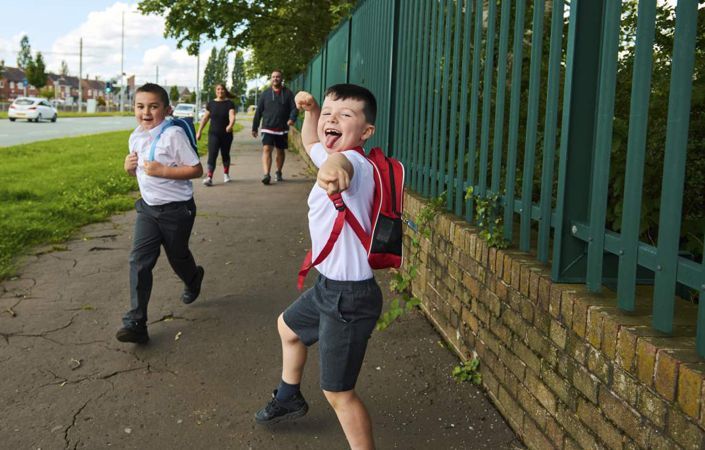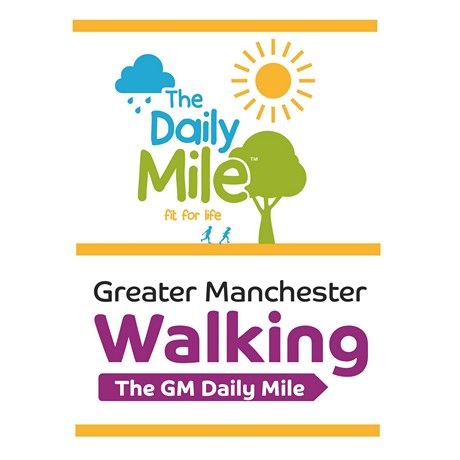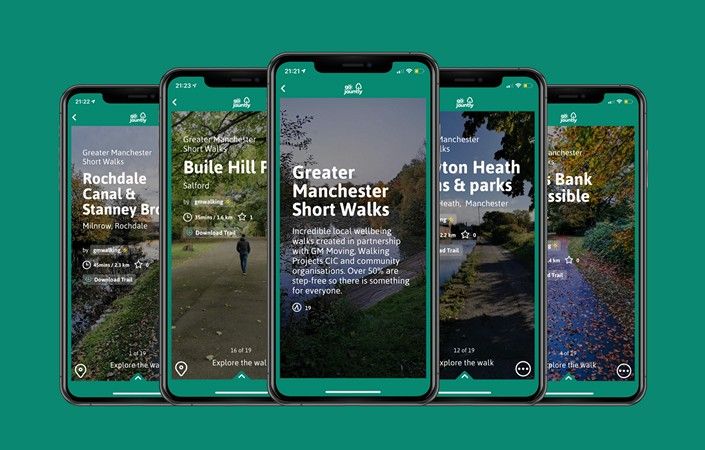
Walking to School
Why the walk to school matters
Happier children
It’s been proven that children who do some form of exercise, especially a walk before school, do better in class because they arrive refreshed, fit and ready to learn.
Less congestion
During morning peak traffic times, one in five cars on the road are taking children school, contributing to congestion, air pollution and carbon emissions.
Cleaner air
The school run alone is responsible for generating half a million tonnes of CO2 per year (which is more than some small countries!). Imagine what we could achieve if we began converting some of these rides to strides?
We have lots of ideas and inspiration to help you get walking to school
The GM Daily Mile Toolkit: Individuals, Family & Friends
This GM Daily Mile toolkit is designed to help you if you are looking to start walking a GM Daily Mile either on your own, with family or friends.
It is bursting with inspiration & tools to help you take those first steps towards your GM Daily Mile walk.
It also includes plenty of tips & support to help you stay motivated, as well as activity sheets for all to enjoy.
Open the toolkit here
Kate's walking story
Meet Kate…
“Before my twins started school last year, I was dreading the school run. Crossing some major roads with a new baby and the twins on their scooters was quite scary, but we persevered.
And it’s great, I get some exercise and a chance to chat to the boys (when I can catch up with them!) and they get to burn off some energy.
Watch the short video
Explore your neighbourhood in 15 mins
Just 15 minutes by bike, trike or wheelchair or on foot covers most local trips.
Walk to school with the Go Jauntly app
A walking app for everyday outdoor adventures
Download the app on App store or Google play
Find the greenest walking routes from A to B or explore new trails based on your location

Tips for parents of secondary school age children
Starting secondary school is a big event in an 11 year old’s life – and that of their parents or carers. It signals the start of a new chapter and one that generally comes with gained independence and longer journeys.
To help make the transition to secondary school easier, here are some things to consider about your child’s journey to their new school:
1. Map it out: Before your child starts secondary school map out their route. If they can, travelling on foot or by bike is a great way to help your child be more physically active every day. Google Maps is an easy and convenient way to map out routes. Cycle Streets’ journey planner helps find quieter routes for cycling. City Mapper is a further option if you live in a city.
2. Try it out: If you can, make a practise journey to school. How long does it take? Is there a nicer or safer route that you can find? Consider all and make a decision about which route your child wants to take.
3. Talk about it: Remind your child about the key elements of road safety; waiting for the green man to cross the road, using crossings to cross the road, where pedestrians/cyclists have the right of way. If in doubt use Highway Code guidance on the gov.uk website. Encourage your child to talk to you about any issues on their journey, and discuss what they should do if something unexpected happens.
4. Prepare for it: If you and your child are keen to be active on the route to school, make sure they are prepared for their chosen way of travelling. Remember, it’s not about the weather, it’s about what you wear! Ensure your child has a waterproof or umbrella to hand for those rainy days. If your child is travelling by bike, they might need a helmet, lock, lights and suitable clothing.
What can my school do to help?
Primary schools can sign up to ‘WOW’ from Living Streets’
WOW is a pupil-led initiative where children self-report how they get to school every day using the interactive WOW Travel Tracker. If they travel sustainably (walk, cycle or scoot) once a week for a month, they get rewarded with a badge. It’s that easy!
Ask your school, or find out more on the link below
Find out more